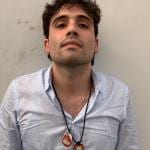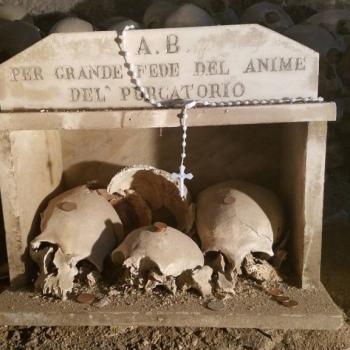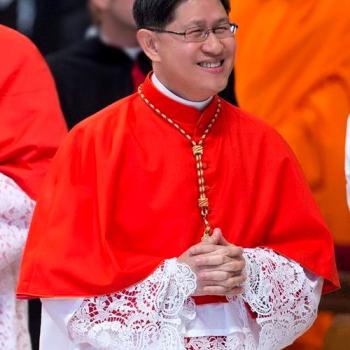
By Professor Andrew Chesnut and Doctor Kate Kingsbury*
While the Catholic Church adopts a preferential option for Amazonians, Amazonians themselves are opting for Pentecostalism. One of the most under-reported stories of the Amazon Synod currently taking place at the Vatican is the dynamic of religious competition in a region that included nine South American countries, most importantly Brazil. Since the 1970s the Church in Latin America, which is home to 40% of the world’s 1.3 billion Catholics, has been hemorrhaging members, mostly to Pentecostalism.
The landmark 2014 Pew survey of the Latin American religious landscape, for which I, Dr. Chesnut, was the lead academic consultant, revealed that a region that for centuries had been 95% or so Catholic was now only 69%. Strikingly, a number of Latin American countries, such as Honduras, Guatemala, and Uruguay were shown to be no longer majority Catholic. And as of 2018, Brazil, home to the largest Catholic population on the planet, 105 million parishioners, is only 50% Catholic. With 104 million Catholics, Mexico is poised to surpass Brazil any day now as the nation with the largest number of Catholics.
One of the main reasons for the pastoral focus on Amazonia are the region’s vulnerable Indigenous groups, though it must be pointed out that most inhabitants of the world’s largest rain forest are not Indigenous, such as in the Brazilian city of Belem where I lived in the early 1990s. Of the diverse demographics that constitute the population of Latin America, it’s the 8% who are Indigenous that have abandoned Catholicism more than any other demographic.
For example, Guatemala, where at least half of the population belongs to one of the 22 Mayan language groups, has the largest relative Protestant population, the great majority Pentecostal, in Latin America. Today there are far more Mayan Pentecostal pastors than Indigenous Catholic priests. In neighboring Mexico the least Catholic and most Protestant state is uncoincidentally the most Indigenous – Chiapas. If the Mexica saint, Juan Diego who received visions of the Virgin of Guadalupe, was recently canonized despite a lack of historical evidence of his existence it’s because the Vatican is keenly cognizant of Indigenous defection from the Church.
So Indigenous defection to Pentecostalism is one of the chief concerns at the Amazon Synod. New polling data from Brazil reveals that the Amazonian region of the country is now more Protestant, the great majority Pentecostal, than Catholic at 46% to 45%. And in terms of clergy serving in the vast region, Pentecostal preachers far outnumber Catholic priests. Pentecostal pastors can marry and have families and are required to have the equivalent of a master’s degree as are Catholic clergy.
Thus it’s in this context of stiff Pentecostal competition in which the highly controversial proposal to allow for older married men to become priests has been put forth. The perennial clergy shortage in Amazonia and in many parts of the world makes it much harder to compete for souls. Assuming that the proposal is accepted and adopted as Church policy in the Amazon region, one can imagine that it’s just a matter of time before there are calls to allow for universal married clergy.
Just like in Latin America, in Africa where I, Dr. Kingsbury did my initial field research, we are seeing a mushrooming growth of Charismatic churches at the expense of the Catholic Church. In nations such as Ghana, Nigeria, South Africa, the Ivory Coast, Zimbabwe, and Kenya the Pentecostal faith is booming. The question thus that we should ask is why is Pentecostalism proving so popular in the Global South? So much so that across Latin America and Africa the Catholic Church is making concerted efforts to reclaim souls? I believe it is because Pentecostalism is a far more alluring religious product to punters, given its propinquity to traditional forms of religious praxis.
Pentecostalism grew out of the 18th century anglo-american revival movement known as the Great Awakening. Charles Fox Parham, the founding ‘father of the Pentecostal’ Movement, fashioned anew the Christian creed, emphasising ecstasy, miracles and the perceiving, proclaiming and imparting of ‘Baptism with the Holy Spirit’ with practices such as glossolalia at the fore. Parham’s student, William Seymour, an Afro-American, moved to Los Angeles and there he opened up a ministry.
The Church whose services were spontaneous, exuberant and predicated upon a strong dichotomy between demonic forces versus the power of the Holy Spirit, began to draw in thousands, especially amongst the poor and disadvantaged. Such was the Church’s popularity that Pastors from far and wide visited. Many began to preach the Pentecostal faith. They sent missionaries out across the global ecumene, to Africa and Latin America, and it was in the latter nations that the faith witnessed exponential growth, especially as Africans and Latin Americans set up their own places of Pentecostal worship.
At the fulcrum of the Pentecostal conception of the cosmos lies the belief in spiritual warfare and an ongoing battle between the forces of good and those of evil. Poverty, illness, alcoholism, and strife are oft attributed to the devil and his legions. During euphoric rituals, congregants present their troubles to the Pastor whether it be sickness or sin and this is blamed on Satanic forces, which in combative mode the Pastor will strike out using the sacred power of the Holy Spirit.
As opposed to Catholic services, that are often serious affairs with a strong emphasis on gnosis, Pentecostal services offer audiences an enchanted and ecstatic experience. Services are marked by musicality, orality, dreams, visions, miraculous transformations and of course, exorcism, deliverance from the devil. When congregants are overwhelmed by the Holy Spirit they lapse into glossolalia and trance-like states. When they are possessed by evil spirits they enter into liminal states from which they can only be liberated by a powerful Pastor channeling the Holy Spirit. The quidditas of the such services is far more appealing to those in the Global South, especially among Indigenous peoples, given that the sort of religious product being proffered shows far more similarities to autochtonous religion.
We must recall that Indigenous religious traditions in the Amazon were largely shamanic. In their role as healer and spiritual guide, shamans would often attribute illnesses and problems to evil spirits that must be removed from their patient’s body. The Pentecostal Pastor has in many ways become a modern shaman. Like his traditional counterpart, his role in the community is to rid people of evil spirits that congregants believe are causing them social ailments and physical sickness. Exorcisms are a moment of high drama, whereby in combative fashion the Pastor questions the congregant to ascertain which spirit is the source of troubles. Once the information is acquired, the Pastor, like the traditional shaman summons a spirit aid, namely the Holy Spirit or Jesus, to strike out the devil. The so-called demonic entity, may even be a known character, a malevolent or even benevolent spirit from the Indigenous belief system depicted in Pentecostal theological terms as demonic, thus rendering the Pentecostal faith syncretic, and seemingly more familiar to congregants.
In both shamanic faiths and the Pentecostal religion possession and the thaumaturgic as well as pathogenic role of spirit entities are a leitmotif. Furthermore, in many Indigenous traditions across Latin America and Africa, it is not just shamanic figures who channel spirits. In some traditions all community members, during regular rituals, seek to be possessed by spirits to acquire healing or supernatural powers. Thus the ecstatic, cathartic experiences of the Pentecostal service with its emphasis on trance-like states, perceiving and being possessed by the Holy Spirit and the battle between good and evil, mimics local religious rituals and echoes familiar conceptions of the cosmos.
*Dr. Kate Kingsbury obtained her doctorate in anthropology at the University of Oxford, where she also did her Mphil. Dr. Kingsbury is a polyglot fluent in English, French, Spanish. She is a polymath interested in exploring the intersections between anthropology, religious studies, philosophy, sociology and critical theory. Dr. Kingsbury is Adjunct Professor at the University of Alberta, Canada. She is fascinated by religious phenomena, not only in terms of their continuity across the Holocene and into the Anthropocene but equally interested in the changes wrought to praxis and belief by humans ensuring the infinite esemplasticity that is inherent to all religions, allowing for their inception, survival, alteration, regeneration and expansion across time and space. Dr. Kingsbury is a staunch believer in equal rights and the power of education to ameliorate global disparities. She also works pro bono for a non profit organisation that aims to empower and educate girls in Uganda. Follow Dr. Kingsbury on Twitter.













